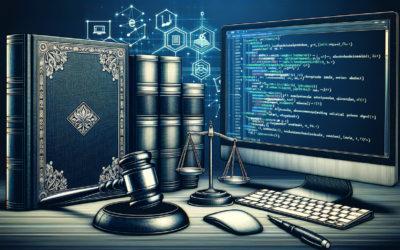Legal Datavisualization
In an age when data is proliferating at dizzying speed, the ability to synthesize and present it in an understandable way is becoming crucial in all fields, including law. Legal datavisualization is emerging as an essential solution for players in the legal field, facilitating the analysis and communication of the complex information inherent in legal issues.
What is Legal Datavisualization?
Legal datavisualization, or the graphical representation of legal data, is a facet of legaltech encompassing tools and methods used to visually illustrate large volumes of legal information. This practice transforms statistics, trends and diagrams into graphs, tables and other visual formats, making data immediately accessible and intelligible.
Benefits of Datavisualization for Legal Professionals
The advantages of data visualization in the legal sector are manifold. Firstly, it enables a better understanding of patterns and correlations within sometimes obscure data. In short, it helps to uncover relevant insights for decision-making in legal analytics, legal project management, and the optimization of advocacy or advisory strategy.
Data Visualization and Predictive Analysis
The use of datavisualization coupled withpredictive case law analysis generates cartographies that can be used to predict the outcome of legal proceedings. These forecasting tools are increasingly used to anticipate legal decisions or to assess the risks involved in a case.
Facilitating access to information
In addition, the visualization of legal information simplifies communication between lawyers and customers. The use of explanatory diagrams makes it easier to explain complex concepts and increases the transparency of legal advice.
Technologies involved in legal data visualization
Behind the visual simplification of legal data lies advanced technology. Automatic Natural Language Processing (NLP) enables complex structures and relationships to be extracted from large volumes of legal texts. In addition, the foundations of legal data visualization rely heavily onartificial intelligence, which plays a key role in the analysis and interpretation of legal data, transforming it into comprehensible visuals.
Datavisualization software
Some software programs, like those mentioned in the premium legal software call to action, are fundamental tools for lawyers and corporate legal departments. These platforms often go hand in hand with Contract Lifecycle Management and eDiscovery solutions, among others.
Case studies and success stories
Implementing legal datavisualization in law firms and legal departments leads to real case studies. Between case law mapping, analytical dashboards and reporting systems for RegTech or RGPD compliance, the cases are numerous.
Frequently asked questions
Here is a list of frequently asked questions about Legal Datavisualization.
Can data visualization improve the decision-making process?
Absolutely. It enables lawyers and legal advisors to base their decisions on clearly presented factual data, directly influencing the quality and efficiency of the decision-making process.
What types of data can be viewed?
All structured data, such as litigation results statistics, due diligence data or case law trends, can be converted into interactive graphs or maps.
Is it only available to large firms?
No, with the evolution of technologies and the democratization of datavisualization tools, even small firms and freelancers can integrate these practices into their daily work.
Legal datavisualization bears witness to the digital transformation of the legal field, taking legal analysis and communication capabilities to a new level of clarity and efficiency.




